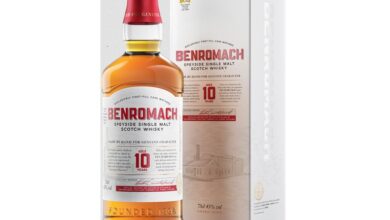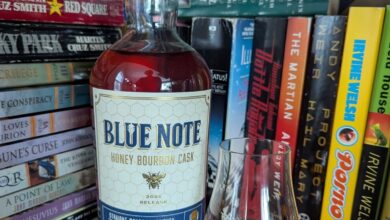Dalwhinnie Distiller’s Edition Scotch Review (2014)
By Elizabeth Emmons
Rating: B+

(Credit: Elizabeth Emmons)
Dalwhinnie is one of those overlooked distilleries that, in the world of Scotch Whisky, one rarely hears much about. It generates little to no buzz, there are few special releases, and independent bottlings are virtually nonexistent, though there are a few floating around from the 60s and 70s on auction sites. Diageo does not seem to spend much money marketing this distillery. There are no sponsored events or tastings. When was the last time you were at your local liquor store and they had a Dalwhinnie tasting table, let alone recommended that you buy a bottle?
As I sip on the Dalwhinnie Distiller’s Edition, bottled in 2014, I am given to wonder why this distillery is not more popular. Never have I been given Dalwhinnie as a gift, never have I given it, and yet, never have I said anything bad about it. I am aware that Diageo uses most of Dalwhinnie stock for its own blend brands such as Buchanan and Black & White.
Perhaps Diageo does not want to over-market Dalwhinnie in order to keep just enough of the product that will sell on the shelf, and use what they need for steady production of their other brands?
Since it’s so obscure, here are some interesting facts about the distillery:
- It has the highest altitude of any distillery in Scotland at 351 meters.
- It is produced in one of the coldest areas of Scotland and has, on average, the coldest recorded temperature there (6.6 C).
- The distillery is named after its location and means “meeting place” which refers to a meeting place for cattle drovers.
The Scotch
The Distiller’s Edition is a beautiful clear copper color with peach tones.
The nose is delicate and unassuming; it comes and goes. It has creamy confection elements (confectionary sugar, caramel, maraschino cherry and hints of butterscotch) with layers of unripened fruit (peaches and pears). There are also some waxy floral tones to it, with notes of bright honeysuckle and the earthy smell of the pistons and pollen of certain blooms.
The mouthfeel on this 43% ABV whisky is of light-medium viscosity with immediate sweet honeyed and peppery notes on the tongue. The peppery notes are not necessarily expected considering the shy nose. The pear on the nose follows through in the palette with the pear veering more toward Jelly Belly rather than fresh pear. To be clear, this is not a bad thing; perhaps the waxiness in the nose is accounted for here in the “synthentic” pear. It is slightly creamy and oily as well. The peppery, woody middle takes over until the finish, which is quite lengthy and mouthwatering, ending on a waxy honey note. The next sip seems only natural.
This is a solid and tasty whisky that ticks off several boxes. It makes for easy drinking and I have found it to be a crowd pleaser, it is not super expensive, and has a beautiful flavor. That being said, many would argue (and I would agree) that the fact that it is a non-age statement (NAS) release AND is priced rather high is slightly irritating since for a NAS, that price does seem a bit expensive when judged against Diageo’s stellar standard releases from Oban, Talisker, and Lagavulin (all of which bear an age statement). Aside from that point, I would definitely recommend this whisky for the reasons above.
The Price
I mentioned price above. Although this particular version of Dalwhinnie Distiller’s Edition is getting hard to find in Europe, it’s still quite available in the U.S. for about $80.




I liked this but I like the regular Dalwhinnie better. Dalwhinnie is a light, elegant but still complex scotch to follow a delicate meal or enjoy in warmer weather. You could almost term this a “breakfast” scotch. I felt the additional time in sherry barrels a little jarring in comparison and for me, it didn’t add benefit to the original product.